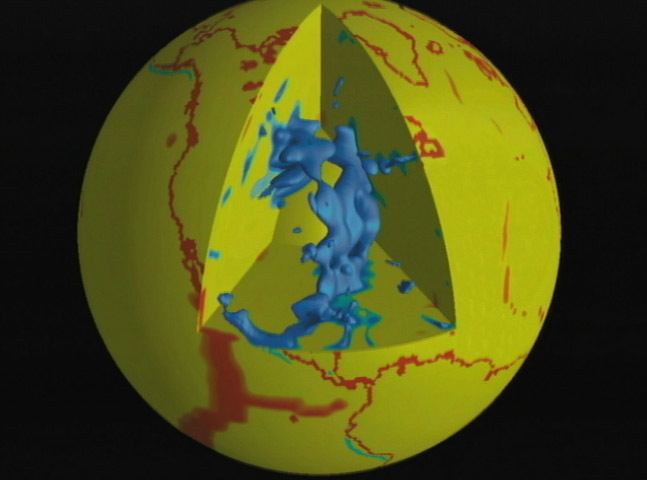 | ||
In geology, a slab is the portion of a tectonic plate that is being subducted.
Slabs constitute an important part of the global plate tectonic system. They drive plate tectonics - both by pulling along the lithosphere to which they are attached in a processes known as slab pull and by inciting currents in the mantle (slab suction). They cause volcanism due to flux melting of the mantle wedge, and they affect the flow and thermal evolution of the Earth's mantle. Their motion can cause dynamic uplift and subsidence of the Earth's surface, forming shallow seaways and potentially rearranging drainage patterns.
Geologists have imaged slabs down to the seismic discontinuities between the upper and lower mantle and to the core–mantle boundary. Slab subduction is the mechanism by which lithospheric material is mixed back into the Earth's mantle.
